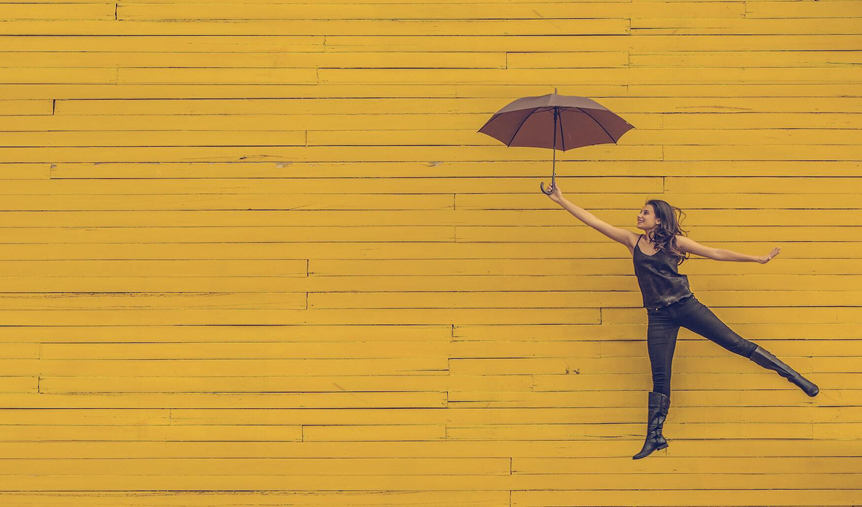Have you come across the term “flow”, also known colloquially as “being in the zone”? It was coined by psychologist Mihaly Csikszentmihalyi to describe “a state in which people are so involved in an activity that nothing else seems to matter; the experience is so enjoyable that people will continue to do it even at great cost, for the sheer sake of doing it” (Csikszentmihalyi, 1990, p. 4). Flow is relevant because Csikszentmihalyi observed people engaged in creative work often experience flow.
Getting to Flow: Practice
What is often omitted from stories about creative breakthroughs are the prerequisites for flow. One of these is the skill necessary to perform the task which has been so honed through practice that it has become virtually automatic. Researcher K. Anders Ericsson studied peak performers and discovered it takes around 10,000 hours of deliberate practice to achieve mastery (Ericsson & Pool, 2016). Deliberate practice doesn’t involve engaging in an activity for the sake of enjoyment; it is practice intended to improve performance.
Consider what it takes to become a prima ballerina – endless rehearsals with sore feet, or to become a concert pianist – hours devoted to repetitive scales. Deliberate practice is not always fun. It can be boring, frustrating and challenging. But it’s a necessary part of learning a craft, improving and developing expertise. It’s not unusual to hear of people becoming “overnight successes”. In truth, they’ve often been perfecting their craft for years before anyone noticed.
Getting to Flow: Technical Knowledge
The other prerequisite for flow is technical knowledge of a field. Csikszentmihalyi (1990) points out that it typically takes people 10 years before they create truly outstanding work, and this is in large part due to the time it takes to develop a deep knowledge base of their area. The more ideas we are familiar with the more chances we have to combine them in new ways. This “10-year rule” may be part of the reason that lifespan research shows creativity peaks in middle age (Velázquez et al., 2015).
We’ve all experienced flashes of insight we call epiphanies, “a-ha! moments”, “lightbulb moments” or “eureka! moments”. Although they appear to emerge spontaneously from our unconscious minds, Csikszentmihalyi (1990) found that these insights appear only after a foundation has been laid, the skills and knowledge base we’ve just discussed. It’s a myth that passively waiting for lightbulb moments will lead to our next creative breakthrough. We need to do the hard yards first.
Thomas Edison, the inventor of the lightbulb, explained effort plays the greatest role in innovation in his oft-cited quote: “Genius is one percent inspiration and 99 percent perspiration”. Much activity precedes a-ha! moments, and similarly, much activity follows them. We talk about “the creative process”, not isolated moments of creativity, for a reason.
Flow, Procrastination and Mind-wandering
But, is there anything we can do to increase our chance of having an “a-ha! moment” once we’ve taken the time to develop mastery? Yes! It turns out that these flashes of insight involve switching between different thinking modes: from a conscious, deliberate, problem-solving mode to the brain’s resting state where spontaneous, unplanned associations arise (Psychology Today, n.d.). Therefore, we can make creative insights more likely by focusing intently on a problem and then parking it to allow our minds time to daydream. Author David Burkus (2013) goes so far as to suggest that the creative process should include procrastination and mind-wandering. Ideas need time and space to incubate.
Practical Tools: Associating and Mind-wandering
Time to experiment and figure out what works best for you.
- Identify one problem in your working life that you have not yet been able to solve, something where creative “out-of-the-box thinking” might be useful.
- Associating: choose one (or both) of the methods below.
- Associating using word prompts: pick a random word from a document you have quick access to. Set a timer for 3 minutes and make a list of associations between this word and your problem. Don’t judge the potential solutions, just document them. For example, let’s say your problem is to “Improve workplace culture” and your random word is “yellow”. One association could be to invite colleagues to enjoy some sunshine outdoors at lunchtime.
- Associating using picture prompts: images are another great way to stimulate associations. Look around your home or office for a picture, then start jotting down connections to your problem no matter how tenuous they seem. For instance, if you spot a beachy photo on a co-worker’s desk, and you are still trying to solve the morale problem, then one association could be to ask everyone to use a tropical background in your next Zoom meeting to lighten the mood. Or it could be to go around the room at face-to-face meetings asking everyone to name their bucket list vacation destination. Again, aim for as many associations as possible without evaluating them at this stage.
- Mind-wandering: now do something to give your mind a break. Go for a brief walk, jump in the shower or take a nap. Avoid the distractions of technology during whatever downtime you choose. If such a break is not possible right now, pause the exercise. Return to it only after a mental rest so your brain has had the chance to switch modes.
- Did any new ideas come to you when your mind was allowed to wander? If so, write these down.
- Repeat the association activity with a new word or image, again with a timer set for 3 minutes.
- Compare your two lists. Do you notice any differences in either the number of ideas or the originality of those ideas in the before and after lists? (Creativity is typically measured in these two ways).
- If you observed that taking a break positively impacted your ability to think of new and useful ideas, make a note that brief periods of daydreaming can actually be highly productive.
Place this note somewhere you’ll see often as a reminder of the value of mind-wandering to creative problem solving. - Repeat steps 1 – 7 for a problem you wish to solve in your personal life.
Key Takeaways
- People engaged in creative work often experience flow.
- The prerequisites for flow are skills and knowledge.
- Peak performers develop skills through deliberate practice. It can take 10,000 hours to achieve mastery.
- It takes around 10 years to build the knowledge base required to become an expert in a field.
- Creativity is not just about inspiration, but hard work.
- Creative insights occur when the brain switches between intense focus and a daydreaming, mind-wandering, rest state.
Editor’s note: Another way to enhance your creativity is to adopt growth mindsets.
References:
- Burkus, D. (2013). The Myths of Creativity: The Truth About How Innovative Companies and People Generate Great Ideas. Jossey-Bass. https://davidburkus.com/books/the-myths-of-creativity/
- Csikszentmihalyi, M. (1990). Flow: The Psychology of Optimal Experience. Harper and Row.
- Ericsson, A., & Pool, R. (2016). Peak: Secrets from the New Science of Expertise. Houghton Mifflin Harcourt.
- Psychology Today. (n.d.). Creativity. Retrieved 21 Octber 2022 from https://www.psychologytoday.com/au/basics/creativity
- Velázquez, J. A., Segal, N. L., & Horwitz, B. (2015). Genetic and environmental influences on applied creativity: A reared-apart twin study. Personality and individual differences, 75, 141-146. https://doi.org/10.1016/j.paid.2014.11.014



